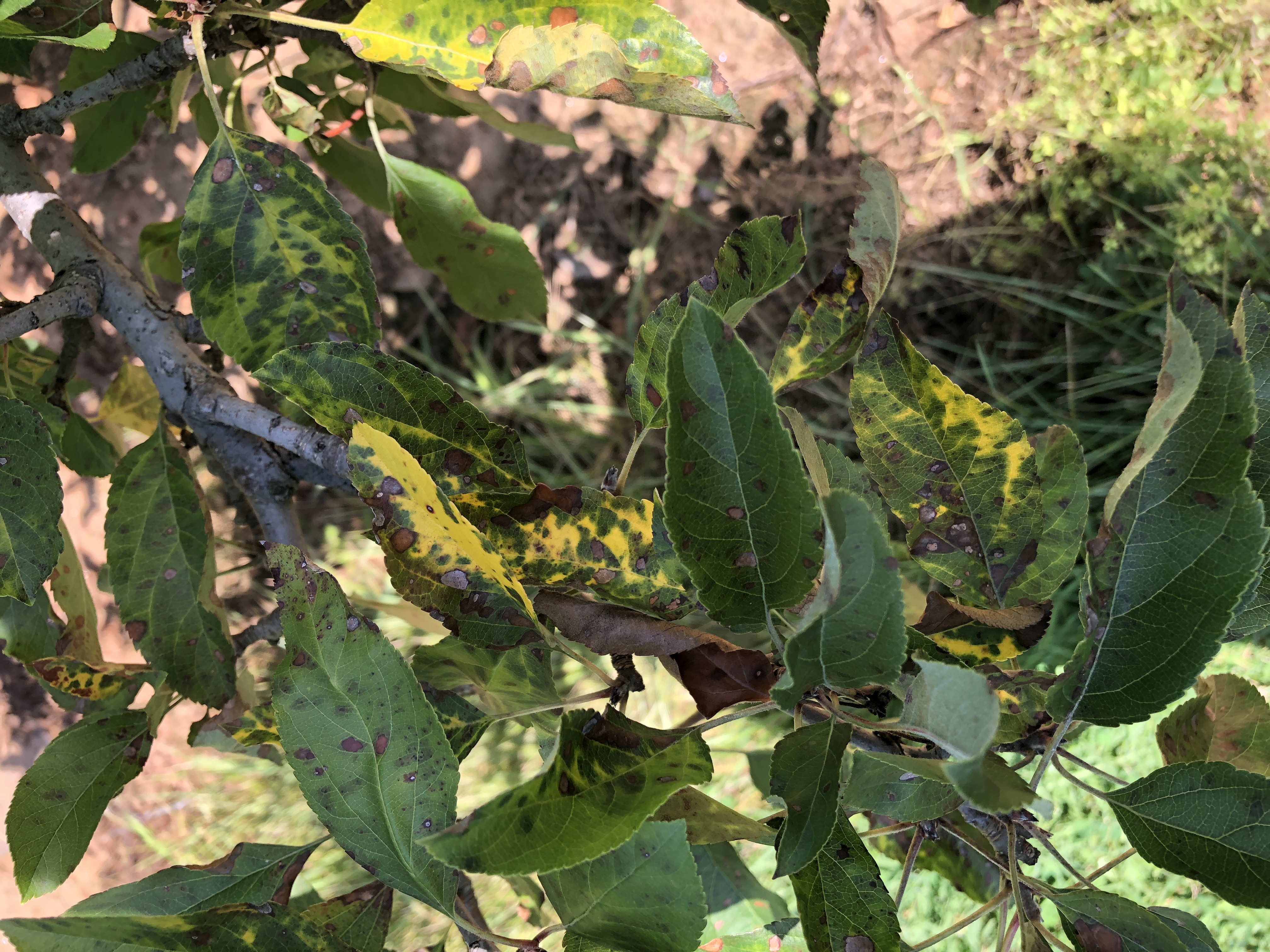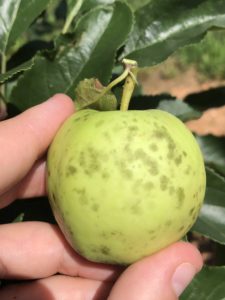Apple Disease Update: Week of July 1
go.ncsu.edu/readext?535490
en Español / em Português
El inglés es el idioma de control de esta página. En la medida en que haya algún conflicto entre la traducción al inglés y la traducción, el inglés prevalece.
Al hacer clic en el enlace de traducción se activa un servicio de traducción gratuito para convertir la página al español. Al igual que con cualquier traducción por Internet, la conversión no es sensible al contexto y puede que no traduzca el texto en su significado original. NC State Extension no garantiza la exactitud del texto traducido. Por favor, tenga en cuenta que algunas aplicaciones y/o servicios pueden no funcionar como se espera cuando se traducen.
Português
Inglês é o idioma de controle desta página. Na medida que haja algum conflito entre o texto original em Inglês e a tradução, o Inglês prevalece.
Ao clicar no link de tradução, um serviço gratuito de tradução será ativado para converter a página para o Português. Como em qualquer tradução pela internet, a conversão não é sensivel ao contexto e pode não ocorrer a tradução para o significado orginal. O serviço de Extensão da Carolina do Norte (NC State Extension) não garante a exatidão do texto traduzido. Por favor, observe que algumas funções ou serviços podem não funcionar como esperado após a tradução.
English
English is the controlling language of this page. To the extent there is any conflict between the English text and the translation, English controls.
Clicking on the translation link activates a free translation service to convert the page to Spanish. As with any Internet translation, the conversion is not context-sensitive and may not translate the text to its original meaning. NC State Extension does not guarantee the accuracy of the translated text. Please note that some applications and/or services may not function as expected when translated.
Collapse ▲While areas of Henderson and Polk County NC received nearly 40% of the average annual rainfall for the region during the last two weeks of May, fortunately the month of June brought a break in the rain. With only 2 inches of rain in Henderson County during the month of June, environmental conditions favoring pathogen infection and disease development were not nearly as favorable as the previous month. Thus, while Glomerella leaf spot/bitter rot infections likely occurred during the last weeks of May the rate of symptom development has been remarkably similar to that of 2017.
Due to the relatively dry June, questions have come up regarding spray intervals. Given my observations of Glomerella leaf spot/fruit rot development in previous years I’d strongly advise growers in NC to remain on a 7 to 10-day application interval. We have been keeping to this interval in our Glomerella Research Orchard at MHCREC and have less than 2% incidence in programs with Captan + ProPhyt as cover sprays. Just to prove my point look at the two photos below. The top photo shows a ‘Gala’ tree in our orchard in which fungicides targeting Glomerella leaf spot have not been applied the entire season. The second photo is of a ‘Gala’ tree right next to the unsprayed tree in which Captan 80 3.75 lb + ProPhyt 4pt/A. has been applied on a 7-day interval since petal fall.
I also want to make sure everyone is on the same page as far as ProPhyt application rates go. To clarify 4 pints of Prophyt (or another Phos. Acid) should be applied in tank mixture with Captan for Glomerella management.
Flyspeck/Sooty Blotch Already Popping Up in Western NC
While flyspeck/sooty blotch is considered a cosmetic disease of apple, severe infections may result in crop loss or downgrading during processing. Captan + ProPhyt works fairly well at managing FSSB. However, if you’ve had heavy disease pressure in certain blocks in the past, you may want to consider including Aprovia or Inspire Super in tank mixture with your Glomerella fungicides.






